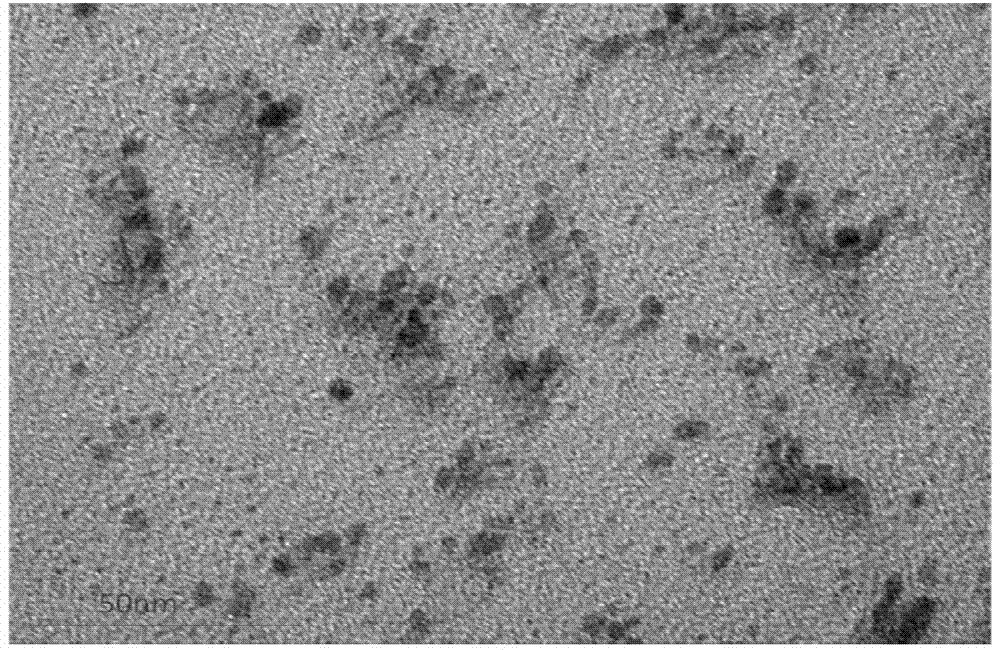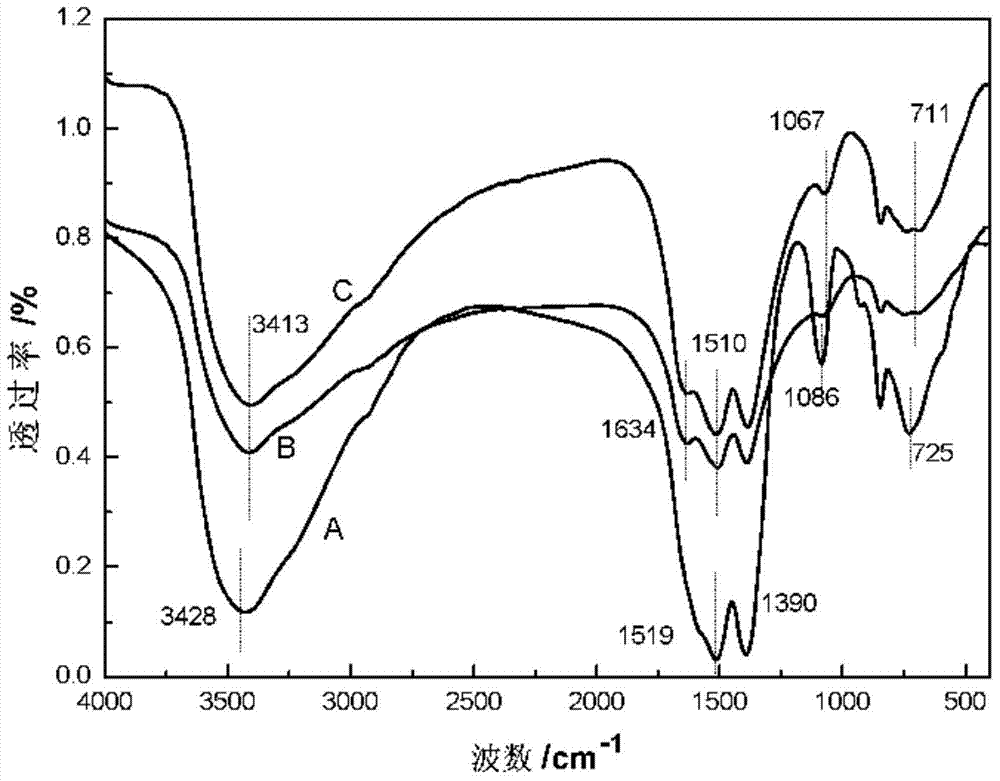Preparation method for Gd2O3 nanoparticle controllably surface-modified by dopamine and used for positive reinforcement of MRI radiography
A nanoparticle, dopamine technology, applied in the field of biomedical imaging technology and nanomedicine, to achieve the effect of contrast enhancement, obvious contrast, and increase signal intensity
- Summary
- Abstract
- Description
- Claims
- Application Information
AI Technical Summary
Problems solved by technology
Method used
Image
Examples
Embodiment 1
[0024] A controllable surface-modified Gd for positive enhancement of dopamine in MRI imaging 2 o 3 A method for preparing nanoparticles, which comprises the steps of:
[0025] 1) Ultra-small Gd 2 o 3 Preparation of nanoparticles: using high temperature "polyol" method, using diethylene glycol DEG as solvent and complexing agent, sodium hydroxide NaOH as hydrolyzing agent, and gadolinium chloride hexahydrate GdCl 3 ·6H 2 O reaction, in which the molar ratio of sodium hydroxide to gadolinium chloride is 1-2:1, and the synthesis of ultra-small Gd with a particle size of less than 10nm 2 o 3 Nanoparticles.
[0026] 2mmol GdCl 3 ·6H 2 O was dissolved in 10mL of diethylene glycol, the concentration of gadolinium chloride was 0.2mol / L, and the dissolution temperature was 140°C, 2.5mmol of sodium hydroxide was dissolved in 10mL of diethylene glycol, and the concentration of sodium hydroxide was 0.25mol / L. The gadolinium chloride diethylene glycol solution and the sodium hydr...
Embodiment 2
[0034] A Gd that can be used for MRI contrast-enhanced surface modification of dopamine 2 o 3 A method for preparing nanoparticles, which comprises the steps of:
[0035] 1) Ultra-small Gd 2 o 3 Preparation of nanoparticles: using high temperature "polyol" method, using diethylene glycol DEG as solvent and complexing agent, sodium hydroxide NaOH as hydrolyzing agent, and gadolinium chloride hexahydrate GdCl 3 ·6H 2 O reaction, in which the molar ratio of sodium hydroxide to gadolinium chloride is 1-2:1, and the synthesis of ultra-small Gd with a particle size of less than 10nm 2 o 3 Nanoparticles.
[0036] 2mmol GdCl 3 ·6H 2 O was dissolved in 10mL of diethylene glycol, the concentration of gadolinium chloride was 0.2mol / L, and the dissolution temperature was 140°C, 2.5mmol of sodium hydroxide was dissolved in 10mL of diethylene glycol, and the concentration of sodium hydroxide was 0.25mol / L. The gadolinium chloride diethylene glycol solution and the sodium hydroxide ...
Embodiment 3
[0043] A Gd that can be used for MRI contrast-enhanced surface modification of dopamine 2 o 3 A method for preparing nanoparticles, which comprises the steps of:
[0044] 1) Ultra-small Gd 2 o 3 Preparation of nanoparticles: using high temperature "polyol" method, using diethylene glycol DEG as solvent and complexing agent, sodium hydroxide NaOH as hydrolyzing agent, and gadolinium chloride hexahydrate GdCl 3 ·6H 2 O reaction, in which the molar ratio of sodium hydroxide to gadolinium chloride is 1-2:1, and the synthesis of ultra-small Gd with a particle size of less than 10nm 2 o 3 Nanoparticles.
[0045] 2mmol GdCl 3 ·6H 2 O was dissolved in 10mL of diethylene glycol, the concentration of gadolinium chloride was 0.2mol / L, and the dissolution temperature was 140°C, 2.5mmol of sodium hydroxide was dissolved in diethylene glycol, the concentration of sodium hydroxide was 0.25mol / L, and the chlorine The gadolinium diethylene glycol solution and the sodium hydroxide diet...
PUM
 Login to View More
Login to View More Abstract
Description
Claims
Application Information
 Login to View More
Login to View More - R&D
- Intellectual Property
- Life Sciences
- Materials
- Tech Scout
- Unparalleled Data Quality
- Higher Quality Content
- 60% Fewer Hallucinations
Browse by: Latest US Patents, China's latest patents, Technical Efficacy Thesaurus, Application Domain, Technology Topic, Popular Technical Reports.
© 2025 PatSnap. All rights reserved.Legal|Privacy policy|Modern Slavery Act Transparency Statement|Sitemap|About US| Contact US: help@patsnap.com



